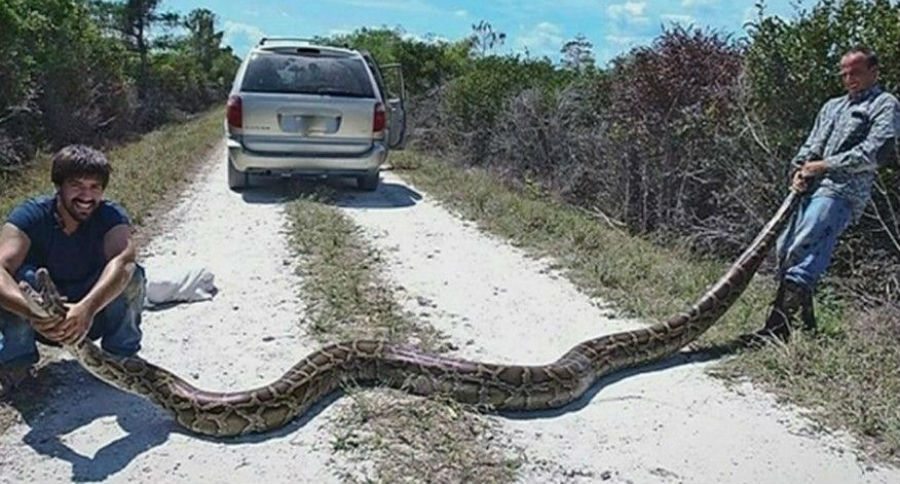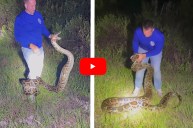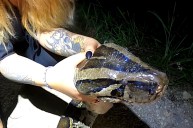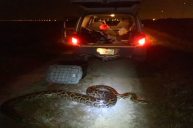Two Florida snake hunters captured an absolutely massive python in the Everglades recently. The giant constrictor reached fifteen feet in length.
"I saw a little gloss, and I saw a big square, brown patch and automatically, I knew what it was," said Leonardo Sanchez. That's the sign that led Sanchez and his partner Nicholas Banos to successfully capture the largest python registered by the South Florida Water Management District so far this season.
The agency commissioned twenty-five people to kill as many pythons as possible over a sixty day period. They call the project the Python Elimination Program, an apt title as the desire is to rid the Everglades of as many of the invasive reptiles as possible. Hunters get $50 for any snake up to four foot long and $25 for every foot in length after that.
As Sanchez spotted the snake he shouted to Banos, who recalled, "He goes, 'Python, python!' The second I get out of the car, and I look over it's this big python stretched there where the trees meet the water. When we jumped at it, he goes and grabs it by the tail. The second he starts to grab it, the snake starts to beeline into the trees, so he tells me, 'Go for the head, go for the head.' I'm trying to get into the trees because it's all over the place."
"I started to try to pull it, so it wouldn't go into the water," recounted Banos, "and the snake just turns straight around and beelines toward my face. That's when he came in, and he jumped from behind and grabbed it by the head, and he even got nipped a couple times."
The two men wrestled with the snake until they were finally able to subdue it, bag it and set it in the back of their vehicle. The massive python measured a whopping fifteen feet long and weighed 144 pounds. Again, it's the biggest snake caught so far this year.
Pythons have become a top predator in the Everglades and the constrictors are changing the dynamic of the environment there. In keeping with the agenda of the hunt, the two men had to dispatch the big snake, which caused a bit of consternation for them.
"We don't hunt for sport. We're not hunting to kill," said Banos. "We hunt to remove. Catch and remove. But having to kill it was a little rough for us. We've never really had to do that before. It was satisfying, but it was also a feeling of a little bit of heartbreak."
Like what you see here? You can read more great articles by David Smith at his facebook page, Stumpjack Outdoors.
NEXT: Lionfish May be Coming to a Seafood Aisle Near You, and it's Great News
https://rumble.com/embed/u7gve.v3tqy9/




